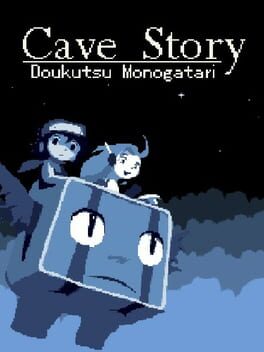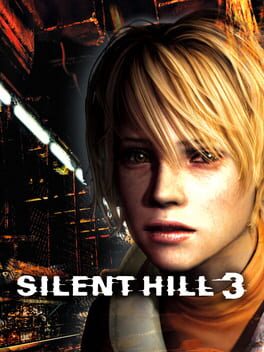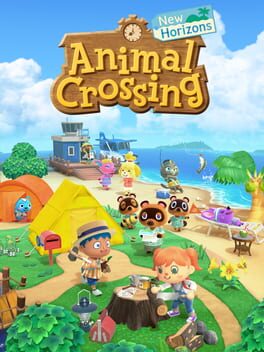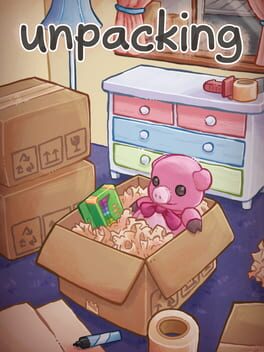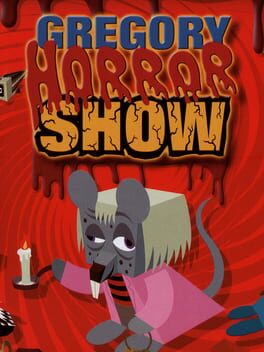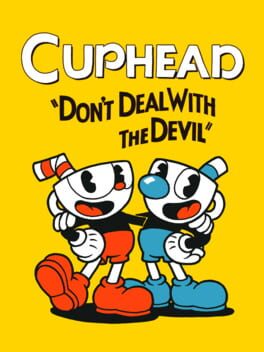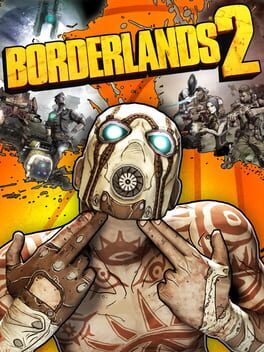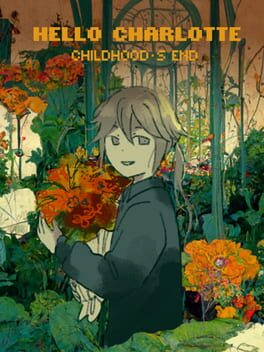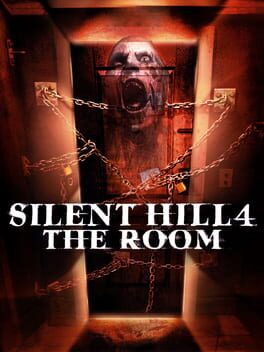FMTownsParty
2005
2004
Perhaps more importantly than making a good game, Daisuke "Pixel" Amaya has assured the world that, provided you have *a* computer (any computer still running can play this, I imagine) and an internet connection, you will always have free access to something universally cherished, something intelligent and forthcoming with ideas of simple design, and something (in its original form) untouched by the inherent evil that coats large-scale game development.
I love this game, but let's be real: it's a public service first, great game second. Give Pixel a key to a city or something.
I love this game, but let's be real: it's a public service first, great game second. Give Pixel a key to a city or something.
2005
2003
Almost a year after this game was released, I think this might be the most high-profile assassination of a beloved Nintendo IP since Skyward Sword's with Zelda. You could argue for some of the bullshit Metroid or Star Fox has gotten since then, but I didn't play those because it was too obvious. This one took a while to really get there, catalyzed only by the constant exposure to it since the pandemic started.
The issues I levied against it the first time have either been kept around or alleviated in some way, but the clear sign that my initial hunch was correct of this being a corpse of an Animal Crossing game is how atonal it ends up being? This game is the polar opposite of relaxing to me, it's like being told to Smile While You Work by your boss. By keeping these completely invisible marks of quality around while insisting that The World Is Yours (which, frankly, I don't want it to be) we have arrived at a game that lacks purpose but is also too weak for you to make one for yourself. So, if you're like me, you scramble to find anything worth doing.
And like, whatever, Animal Crossing games can and do eventually feel lifeless by the end of your time with them - what makes this game different? Well, being CONSTANTLY bombarded with screenshots and videos and anecdotes on social media about how this game has the power to connect people in ways only the masters at Nintendo could do... it certainly doesn't help. It was a struggle to care, but people's insistence that everything was fine minus some pesky QoL issues really drove it downwards for me. Though the obvious bends towards modern mobile/F2P design don't help this game's case, it doesn't get substantially better if you can keep your tools forever. It doesn't if you are able to buy multiple things from the catalog every day. What it needs is a fucking pulse.
The issues I levied against it the first time have either been kept around or alleviated in some way, but the clear sign that my initial hunch was correct of this being a corpse of an Animal Crossing game is how atonal it ends up being? This game is the polar opposite of relaxing to me, it's like being told to Smile While You Work by your boss. By keeping these completely invisible marks of quality around while insisting that The World Is Yours (which, frankly, I don't want it to be) we have arrived at a game that lacks purpose but is also too weak for you to make one for yourself. So, if you're like me, you scramble to find anything worth doing.
And like, whatever, Animal Crossing games can and do eventually feel lifeless by the end of your time with them - what makes this game different? Well, being CONSTANTLY bombarded with screenshots and videos and anecdotes on social media about how this game has the power to connect people in ways only the masters at Nintendo could do... it certainly doesn't help. It was a struggle to care, but people's insistence that everything was fine minus some pesky QoL issues really drove it downwards for me. Though the obvious bends towards modern mobile/F2P design don't help this game's case, it doesn't get substantially better if you can keep your tools forever. It doesn't if you are able to buy multiple things from the catalog every day. What it needs is a fucking pulse.
2022
Hey there! I’ll be honest, I don’t have a great deal of interest in talking about Elden Ring in any formal capacity. If someone wants to pay me to do it, I might, but no-one likely does. :/
Anyway, instead of a write-up, I’m just gonna list my 10 favorite proper nouns in the game.
-
10. Vulgar Militiamen (keepsies on this one for my future hardcore punk band)
9. Shabriri Grape
8. Ancient Death Rancor
7. Morgott, The Omen King
6. Flame, Fall Upon Them (the choice to make spell names full sentences is always sick, regardless of property)
5. Fingercreeper
4. Land Squirt
3. Albinauric Bloodclot (I would ride around on Torrent just mouthing “albinauric bloodclot” a lot)
2. [Bastard’s Stars](https://eldenring.wiki.fextralife.com/Bastard's+Stars)
and finally, 1. Godskin Stitcher
Alright, bye!!
Anyway, instead of a write-up, I’m just gonna list my 10 favorite proper nouns in the game.
-
10. Vulgar Militiamen (keepsies on this one for my future hardcore punk band)
9. Shabriri Grape
8. Ancient Death Rancor
7. Morgott, The Omen King
6. Flame, Fall Upon Them (the choice to make spell names full sentences is always sick, regardless of property)
5. Fingercreeper
4. Land Squirt
3. Albinauric Bloodclot (I would ride around on Torrent just mouthing “albinauric bloodclot” a lot)
2. [Bastard’s Stars](https://eldenring.wiki.fextralife.com/Bastard's+Stars)
and finally, 1. Godskin Stitcher
Alright, bye!!
2021
2001
In one sentence: The Big Bang as recounted by a 14-year-old whose most anticipated movie is The Matrix Reloaded, and whose primary relationship with underwear is being forced to wear it like a monastic robe.
[Hey there. Despite being an action game fan, DMC as a franchise has been a massive blind spot in my backlog. I’m fixing that now, and I figured the insight of fresh(ish) eyes into a storied set of games like this would be interesting to work out with longer reviews. The reviews will be divided into multiple sections, each notated by difficulty and completionist goals set by myself for each playthrough. It’s long, so big thanks for reading!]
I. (Playthrough 1, Normal mode, Any%)
While Character Action (or Stylish Action, or Hack-and-Slash, or what the fuck ever) has the privilege of being a fusion of two genres that saw contemporary success and innovation in their primes, it would be underselling Team Little Devils to imply that anything in Devil May Cry would’ve been possible to achieve through mimicry. After all, the entire conceit of the genre was to, in this stage at least, shift the beat-em-up arcade design into a 3D space, using the only camera technique that unabashedly worked pre-millennium. Similar goals were set for games before this, but all of them that I’ve seen are... shackled, let’s say. While I would argue that a few games, Soul Reaver and Fighting Force as examples, are worthy of a seat at the table(a booster seat, maybe), to my knowledge, DMC is a first in that its action is coherent and stable enough to be the foundation with which the rest of the game rises up in expectation. The limitations set in by its history as a rogue Resident Evil sequel surely had a hand in this, but we’ll cross that bridge when we get there.
There’s no denying that a game released in 2001 looks, talks, and behaves as expected, but the idea of a genre progenitor keeping some kind of pace with the contemporary is so outlandish in the medium of games that rewarding it on this basis alone is understandable. For reference, Yie Ar Kung-Fu had its 20th birthday the same year Tekken 5 released, and Battlezone shares its 20th with a Quake III expansion. With all this said, I’d like to keep the legacy talk at a minimum, as DMC is worth discussing on its own merits.
There’s an almost-cheap totality that this era of Capcom was capable of displaying in their pastiche-y level architecture. The castle is immediately established as an entity in and of itself, groaning out haunted songs and surrounding Dante with unreliable machinations before you even fight an enemy. It would all be exposed as arbitrary level design if it weren’t for 1. the aforementioned wholeness of it all, but much, much more importantly, 2. the pacing this game works in, which is close to perfection?
Granted, the beginning is helped by a string of cheekily short levels with quick capsules of “good job, bud” feedback, but the grip with which you are seeing new things and being given room to stretch your legs is shocking given the lack of trodden genre ground (though paradoxically familiar given the ResiEvil legacy). Not only does this game have good backtracking, it is a thesis on how to imbue familiar spaces with life to match, if not exceed The New (again, RE all day). That said, the last third of the game is lined with some fatiguing content, the height being a stack of sequential boss fights outlined by the one fool that overstays its welcome, Nightmare, totaling to a lot of repeated exposure that could’ve been truncated. Given how some of the early boss fights have outright skips and cheese strategies, it doesn’t seem absurd to imagine a world where Nightmare 1 or 2 is as skippable as Phantom 2 or Griffon 1. This could just be the me that has played this game four fuckin’ times in a month talking, by the way, so take it with a grain of salt.
Fluidity is the name of the game in both pacing and combat itself, as Team Little Devils astutely recognized that giving a massive increase to space also meant an increase to potential aimlessness. The stylish rankings are an obvious solution to this, though I’d also include the soft lock-on (as obnoxious as it can be) and barrier-based level design as helping out too. The stylish ranking is really tight in this game - even my little knowledge of future entries knows that the one-and-a-half second window is minuscule by comparison. I thought this was limiting at first, thinking there was some absurdity in knowing that a near-perfect High Time was worthy of punishment despite it still working in the machinations of the game as effectively as one that did fit. And while this is still true, there’s a risk it runs in being too loose that future systems don’t (the game simply lacks the breadth to uphold the stylish combos we eventually see in DMC3 on); besides, with enough time and experience in the game, the system ends up serving its role as an incentive to forego safe spacing and work through mobs of enemies with a purpose, especially as devil trigger becomes a core part of your moveset. Maintaining Absolute! or Stylish! through a crowd is incredibly rewarding given the circumstances, so I’d say it equals out to “worth it” even if you do occasionally reset anticlimactically.
While on the topic, if there’s anything that a passer-by will inevitably call into question, it’s the pool of moves. While it is lighter than future titles in the genre, there’s an assumption that it’s lacking which I think is simply untrue. I mean, think about it: when embarking on a new frontier of design, the main mission is always one of self-contained purpose - you have to answer the questions yourself.
So, if the question is, “why is Dante’s moveset this way?”, the answer lies in the enemy design. As much as I imagine Team Little Devils mourns the lack of intermixed encounters due to technical limitations, they do about as well with single enemies as one could ask for. Each brand has strengths and weaknesses, especially with late-game mobs asking for their share of respect. Luckily, it is rarely a binary system, but instead a gradient of encouragement that, upon discovering either through experimentation or reading lines of enemy dossiers, becomes a reward in and of itself. You coooould fight a frost with Alastor, but busting out Ifrit to lay heavy, rubatoesque chains into an enemy designed around mobility and space control makes for arguably the best feeling moments of the entire game. There’s a call-and-response of sorts with correcting your playstyle for a given encounter that would be much tougher to juggle with a larger pool, so by the end of the game, you do end up using just about everything, minus one or two purchased techniques which feel stubborn in their applications; but hell, even then you could still justify their inclusion with that nebulous “style” you’re after. All this is, besides the pacing, the crowning achievement of the game, so I’m really curious to see if/how future entries continue this alongside the added weapon / character variety and mechanical ornamentation.
II. (Playthrough 2, Normal Mode, S-rank Only, All Blue Orbs & All Secret Missions (I missed one...))
Lofty ambitions for a second playthrough, I know, but I’m no novice to the genre and I wasn’t shying away from external help at this point. Ultimately, the goal was to have a save file up to snuff for DMD Mode, which would be only a short Hard Mode playthrough away considering how the game unlocks difficulties. I had already been exposed to the bullshit-linchpins that are Grenade Rolling and Shotgun Hiking, so hitting par felt like it was more a matter of personal restraint to not hand the game its own ass. However, I immediately hit a blockade at Mission 2, getting A’s and B’s several times in a row despite clearing the requirements that the internet had told me. I did some further research, and discovered the true nature of this game’s ranking system, an act that felt like opening up the ark of the covenant.
I’ll try to keep the explanation simple: besides the obvious requirements of red orbs and time, there are several invisible markers which tally up to a final, also invisible score. Some of these extra conditions make sense even without them being explicitly referred to (damage taken), while others are less immediate in their clarity (entering rooms multiple times). Over the years, I’ve settled one definition of games as a space to take rules, things people usually dislike, and uphold them for their artistic sake. Well, here you go - here are those rules you ordered.
I mostly mean it as a joke, but ranking systems in games like this do hold the risk of backfiring, or at least becoming numbing attributes. Seasoned Character Action-ers already know that *A* playthrough is rarely enough, as the game’s early judgments are bound to be the equivalent of a teacher scolding you before you hand your homework in. And while DMC’s is far from bad, my read on it is one of a hungover teacher. I would get strange rankings both positive and negative, and even with an internalized knowledge of how it works, I’d still have to occasionally assume one to two things in order to justify the letter on the screen. If these Character Action grading systems are performance tests, then my performance had, at the final step, been rendered inert. While I have since gotten over these requirements, accepting their nature and even enjoying the trek to all S-ranks, I can’t help but think of the legacy of this game’s ranking system as being ineffably lenient, a sentiment that is briefly untrue until, well, it ends up being true again.
As for the rest of the conditions I set for myself, the secret missions vary in quality, though I did find some of them to be absurdly funny for a man like Dante to waste time doing (the sargasso staircase is an interesting way to teach enemy stepping, but also the image of 20+ skulls chattering their teeth at you when you fail is perfect video gaming). I always find some respect for something that’s earned the “Secret” title in a game, so needless to say these missions get some incredulous stares followed by a salute for the brave soldiers that rubbed up against everything Doomguy-style to find them. Lord knows I’m not in those ranks - I just read their memoirs.
III. (Playthroughs 3-4, Hard & Dante Must Die Mode, Any%)
After two playthroughs, one an attempt at genuine perfectionism, I had grown pretty resilient to the game’s standard set of challenges. Hard ended up feeling a little passé, in all honesty - once you learn the optimal strategy for every enemy type, they’ll very rarely cause problems. Another unfortunate side effect of the game’s single-enemy encounters is that the same schtick works regardless of the external pressures. Of course, not all was lost - this playthrough probably ended up being the most fun purely due to the range of options I had unlocked finally narrowing down into usable tools. It was here that the game became about mastery, and I like to think I- Oh fuck.
Hard is the setup, Dante Must Die is the punchline. Emphasis on “punch.”
Though the structure of DMD resembles Hard Mode, no-one can properly anticipate how the little changes end up feeling until the moment arrives and a single marionette becomes threatening. The DT timer is a genuine stroke of genius, as the tension missing from Hard for me had skidded into the driveway at the thought of a Blade becoming a mini-boss in its own right, super-armoring its way through every move as I struggle to conjure 3 blue runes into existence to stand a single chance. However, this was exciting, and in a strange way, felt like the final missing link between this game and the Survival Horror roots it was indebted to.
Of course, anyone familiar likely knows that the DT timer is a red herring. The true namesake of this difficulty lies in the newly bolstered boss fights, each of which is simply embarrassed with health. Nearly every fight, with the exception of Phantom 2, has transmogrified into an endurance run now, pinning the meter completely into defense. You simply cannot sustain offense perfect enough to deal any appreciable damage to them, so you’re left to resort to turtling. Give me the best pattern, as often as you can, while I thunk grenades for 3 and a half minutes. Please, God, do not do that move. I want to go to bed happy.
I’m on the other side of it now, so I can say with full-throated confidence that playing Devil May Cry 1 on DMD Mode this early on in my experience with the game was a flat-out terrible idea. It is clearly asking for absolute mastery of every move, pattern recognition that could only be gained through legitimate study, and, worst of all for me, a level of zen that rivals that of a monk. Nightmare 2, Nightmare 3, and Mundus are collectively some of the most excruciating experiences I’ve had in games, and barring the occasional bullshit pattern, it was self-inflicted. Kamiya played me, fair and square. Excuse me while I block myself.
[Hey there. Despite being an action game fan, DMC as a franchise has been a massive blind spot in my backlog. I’m fixing that now, and I figured the insight of fresh(ish) eyes into a storied set of games like this would be interesting to work out with longer reviews. The reviews will be divided into multiple sections, each notated by difficulty and completionist goals set by myself for each playthrough. It’s long, so big thanks for reading!]
I. (Playthrough 1, Normal mode, Any%)
While Character Action (or Stylish Action, or Hack-and-Slash, or what the fuck ever) has the privilege of being a fusion of two genres that saw contemporary success and innovation in their primes, it would be underselling Team Little Devils to imply that anything in Devil May Cry would’ve been possible to achieve through mimicry. After all, the entire conceit of the genre was to, in this stage at least, shift the beat-em-up arcade design into a 3D space, using the only camera technique that unabashedly worked pre-millennium. Similar goals were set for games before this, but all of them that I’ve seen are... shackled, let’s say. While I would argue that a few games, Soul Reaver and Fighting Force as examples, are worthy of a seat at the table
There’s no denying that a game released in 2001 looks, talks, and behaves as expected, but the idea of a genre progenitor keeping some kind of pace with the contemporary is so outlandish in the medium of games that rewarding it on this basis alone is understandable. For reference, Yie Ar Kung-Fu had its 20th birthday the same year Tekken 5 released, and Battlezone shares its 20th with a Quake III expansion. With all this said, I’d like to keep the legacy talk at a minimum, as DMC is worth discussing on its own merits.
There’s an almost-cheap totality that this era of Capcom was capable of displaying in their pastiche-y level architecture. The castle is immediately established as an entity in and of itself, groaning out haunted songs and surrounding Dante with unreliable machinations before you even fight an enemy. It would all be exposed as arbitrary level design if it weren’t for 1. the aforementioned wholeness of it all, but much, much more importantly, 2. the pacing this game works in, which is close to perfection?
Granted, the beginning is helped by a string of cheekily short levels with quick capsules of “good job, bud” feedback, but the grip with which you are seeing new things and being given room to stretch your legs is shocking given the lack of trodden genre ground (though paradoxically familiar given the ResiEvil legacy). Not only does this game have good backtracking, it is a thesis on how to imbue familiar spaces with life to match, if not exceed The New (again, RE all day). That said, the last third of the game is lined with some fatiguing content, the height being a stack of sequential boss fights outlined by the one fool that overstays its welcome, Nightmare, totaling to a lot of repeated exposure that could’ve been truncated. Given how some of the early boss fights have outright skips and cheese strategies, it doesn’t seem absurd to imagine a world where Nightmare 1 or 2 is as skippable as Phantom 2 or Griffon 1. This could just be the me that has played this game four fuckin’ times in a month talking, by the way, so take it with a grain of salt.
Fluidity is the name of the game in both pacing and combat itself, as Team Little Devils astutely recognized that giving a massive increase to space also meant an increase to potential aimlessness. The stylish rankings are an obvious solution to this, though I’d also include the soft lock-on (as obnoxious as it can be) and barrier-based level design as helping out too. The stylish ranking is really tight in this game - even my little knowledge of future entries knows that the one-and-a-half second window is minuscule by comparison. I thought this was limiting at first, thinking there was some absurdity in knowing that a near-perfect High Time was worthy of punishment despite it still working in the machinations of the game as effectively as one that did fit. And while this is still true, there’s a risk it runs in being too loose that future systems don’t (the game simply lacks the breadth to uphold the stylish combos we eventually see in DMC3 on); besides, with enough time and experience in the game, the system ends up serving its role as an incentive to forego safe spacing and work through mobs of enemies with a purpose, especially as devil trigger becomes a core part of your moveset. Maintaining Absolute! or Stylish! through a crowd is incredibly rewarding given the circumstances, so I’d say it equals out to “worth it” even if you do occasionally reset anticlimactically.
While on the topic, if there’s anything that a passer-by will inevitably call into question, it’s the pool of moves. While it is lighter than future titles in the genre, there’s an assumption that it’s lacking which I think is simply untrue. I mean, think about it: when embarking on a new frontier of design, the main mission is always one of self-contained purpose - you have to answer the questions yourself.
So, if the question is, “why is Dante’s moveset this way?”, the answer lies in the enemy design. As much as I imagine Team Little Devils mourns the lack of intermixed encounters due to technical limitations, they do about as well with single enemies as one could ask for. Each brand has strengths and weaknesses, especially with late-game mobs asking for their share of respect. Luckily, it is rarely a binary system, but instead a gradient of encouragement that, upon discovering either through experimentation or reading lines of enemy dossiers, becomes a reward in and of itself. You coooould fight a frost with Alastor, but busting out Ifrit to lay heavy, rubatoesque chains into an enemy designed around mobility and space control makes for arguably the best feeling moments of the entire game. There’s a call-and-response of sorts with correcting your playstyle for a given encounter that would be much tougher to juggle with a larger pool, so by the end of the game, you do end up using just about everything, minus one or two purchased techniques which feel stubborn in their applications; but hell, even then you could still justify their inclusion with that nebulous “style” you’re after. All this is, besides the pacing, the crowning achievement of the game, so I’m really curious to see if/how future entries continue this alongside the added weapon / character variety and mechanical ornamentation.
II. (Playthrough 2, Normal Mode, S-rank Only, All Blue Orbs & All Secret Missions (I missed one...))
Lofty ambitions for a second playthrough, I know, but I’m no novice to the genre and I wasn’t shying away from external help at this point. Ultimately, the goal was to have a save file up to snuff for DMD Mode, which would be only a short Hard Mode playthrough away considering how the game unlocks difficulties. I had already been exposed to the bullshit-linchpins that are Grenade Rolling and Shotgun Hiking, so hitting par felt like it was more a matter of personal restraint to not hand the game its own ass. However, I immediately hit a blockade at Mission 2, getting A’s and B’s several times in a row despite clearing the requirements that the internet had told me. I did some further research, and discovered the true nature of this game’s ranking system, an act that felt like opening up the ark of the covenant.
I’ll try to keep the explanation simple: besides the obvious requirements of red orbs and time, there are several invisible markers which tally up to a final, also invisible score. Some of these extra conditions make sense even without them being explicitly referred to (damage taken), while others are less immediate in their clarity (entering rooms multiple times). Over the years, I’ve settled one definition of games as a space to take rules, things people usually dislike, and uphold them for their artistic sake. Well, here you go - here are those rules you ordered.
I mostly mean it as a joke, but ranking systems in games like this do hold the risk of backfiring, or at least becoming numbing attributes. Seasoned Character Action-ers already know that *A* playthrough is rarely enough, as the game’s early judgments are bound to be the equivalent of a teacher scolding you before you hand your homework in. And while DMC’s is far from bad, my read on it is one of a hungover teacher. I would get strange rankings both positive and negative, and even with an internalized knowledge of how it works, I’d still have to occasionally assume one to two things in order to justify the letter on the screen. If these Character Action grading systems are performance tests, then my performance had, at the final step, been rendered inert. While I have since gotten over these requirements, accepting their nature and even enjoying the trek to all S-ranks, I can’t help but think of the legacy of this game’s ranking system as being ineffably lenient, a sentiment that is briefly untrue until, well, it ends up being true again.
As for the rest of the conditions I set for myself, the secret missions vary in quality, though I did find some of them to be absurdly funny for a man like Dante to waste time doing (the sargasso staircase is an interesting way to teach enemy stepping, but also the image of 20+ skulls chattering their teeth at you when you fail is perfect video gaming). I always find some respect for something that’s earned the “Secret” title in a game, so needless to say these missions get some incredulous stares followed by a salute for the brave soldiers that rubbed up against everything Doomguy-style to find them. Lord knows I’m not in those ranks - I just read their memoirs.
III. (Playthroughs 3-4, Hard & Dante Must Die Mode, Any%)
After two playthroughs, one an attempt at genuine perfectionism, I had grown pretty resilient to the game’s standard set of challenges. Hard ended up feeling a little passé, in all honesty - once you learn the optimal strategy for every enemy type, they’ll very rarely cause problems. Another unfortunate side effect of the game’s single-enemy encounters is that the same schtick works regardless of the external pressures. Of course, not all was lost - this playthrough probably ended up being the most fun purely due to the range of options I had unlocked finally narrowing down into usable tools. It was here that the game became about mastery, and I like to think I- Oh fuck.
Hard is the setup, Dante Must Die is the punchline. Emphasis on “punch.”
Though the structure of DMD resembles Hard Mode, no-one can properly anticipate how the little changes end up feeling until the moment arrives and a single marionette becomes threatening. The DT timer is a genuine stroke of genius, as the tension missing from Hard for me had skidded into the driveway at the thought of a Blade becoming a mini-boss in its own right, super-armoring its way through every move as I struggle to conjure 3 blue runes into existence to stand a single chance. However, this was exciting, and in a strange way, felt like the final missing link between this game and the Survival Horror roots it was indebted to.
Of course, anyone familiar likely knows that the DT timer is a red herring. The true namesake of this difficulty lies in the newly bolstered boss fights, each of which is simply embarrassed with health. Nearly every fight, with the exception of Phantom 2, has transmogrified into an endurance run now, pinning the meter completely into defense. You simply cannot sustain offense perfect enough to deal any appreciable damage to them, so you’re left to resort to turtling. Give me the best pattern, as often as you can, while I thunk grenades for 3 and a half minutes. Please, God, do not do that move. I want to go to bed happy.
I’m on the other side of it now, so I can say with full-throated confidence that playing Devil May Cry 1 on DMD Mode this early on in my experience with the game was a flat-out terrible idea. It is clearly asking for absolute mastery of every move, pattern recognition that could only be gained through legitimate study, and, worst of all for me, a level of zen that rivals that of a monk. Nightmare 2, Nightmare 3, and Mundus are collectively some of the most excruciating experiences I’ve had in games, and barring the occasional bullshit pattern, it was self-inflicted. Kamiya played me, fair and square. Excuse me while I block myself.
2003
Shoutouts to 12-year-old, socially inept me for screaming "JUDGEMEEEEENT" at my friends who (rightfully) didn't know I was referencing a character from a PS2 game that was only released in Europe and Japan based on a CGI animation series.
Wow, when I put it that way, the trajectory of my life makes a lot more sense.
Wow, when I put it that way, the trajectory of my life makes a lot more sense.
2017
2012
I bought this game at a Target's black friday sale for $35 and took it home to discover I hated almost everything about it. Days later, I then went to a local brick-and-mortar used games store which let me trade it in for $37 in-store credit.
Maybe the only game that actively made me money. Half a star for that!
Maybe the only game that actively made me money. Half a star for that!
Thorny, vantablack comedy, dripping with its own caustic bitterness. Successfully defines the difference between the pain of intentionally pressing your thumb against a sharp edge and someone else doing it. However, some incredibly clear moments bleed through the cacophony and will probably stick around in my mind for some time. Even a single character like Anri herself will probably cause me to collapse at some point in the near future - looking forward to that.
It might not yours, but Hello Charlotte 0/3 evades my rating scale. It's the messiest shit I've played... ever? To confine it to one conclusion would do a disservice to it, but most importantly to me. I need time with this.
edit: time's up, 5 stars.
It might not yours, but Hello Charlotte 0/3 evades my rating scale. It's the messiest shit I've played... ever? To confine it to one conclusion would do a disservice to it, but most importantly to me. I need time with this.
edit: time's up, 5 stars.
Contained herein is reasonable evidence to suggest that Thom Yorke and Stanley Donwood, decades before their "game" debut, were better environmental storytellers than just about anyone who has worked on a game with "-shock" in the title.
On a less caustic note, this is a pitch-perfect accompaniment for two albums that I thought would never be capable of eliciting strong feelings from me again after wearing them out in my younger years. Wish there was a Optimistic sequence but the triple-threat of How To Disappear/Pyramid Song/You and Whose Army? will make up for it.
On a less caustic note, this is a pitch-perfect accompaniment for two albums that I thought would never be capable of eliciting strong feelings from me again after wearing them out in my younger years. Wish there was a Optimistic sequence but the triple-threat of How To Disappear/Pyramid Song/You and Whose Army? will make up for it.
Being on this website means I’m likely in proximity to the densest population of Silent Hill 4 fans per internet-mileage. It really cannot be overstated just how steep the dropoff in numbers is from the average SH fan to one that’s played, let alone likes SH4. And it’s not hard to see why, frankly. It’s a challenging experience even within its series’ context, which says a lot considering the comparison points. Honestly, outside of plot, previous experience with the series HARDLY prepares you - it’d be a lesson in frustration to approach this game with the same lens or expectations as SH1-3. Credit where it’s due though, that knotted, at times appalling temperament SH4 carries is attractive in its own way. While I’d hesitate to call it a wholly innocent victim of its reception, I still think it’s plenty deserving of this simmering enthusiasm which has cropped up on the outskirts of Silent Hill fandom.
Everyone who plays it can speak to the all-out bonkers audiovisuals - however, I do think that the malaise emanating off of this game extends beyond its surface. Despite being the most standoffish of the games, it’s still just as interested in character work as the others. After showing up and then some with the characters in their previous two games, it’s clear they were after something different here. It’s hard to put my finger on it, but there’s a muted, uncanny veil over the game which hadn’t been there previously. And these things in tandem lead to some odd bits, like Henry’s VA’s brand of anti-charisma choking the life out of every sentence from his mouth (he doesn't even speak that much to begin with), or the brief, cursory nature of the to-be sacrament encounters.
Does it fail itself in this regard? No, not necessarily, though the experience is undeniably colored by these things, and I’d be lying if I said it was batting .1000. It’s hard not to feel like this game’s pacing and presentation is a little more matted and coarse than the ones before it, and I’m sorry, but this pairs with the languid and sometimes even grating first half a little unpleasantly (and yes, I do acknowledge the irony of complaining about the first half of a game with a notoriously hellish second half, stick with me). I’ll put it this way: if there was ever an accomplice alongside the heavy emphasis on its half-baked combat that tanked this game’s reception, I’d point fingers in that direction. I’m trying to avoid outright comparisons to the previous games, but we are an ocean’s distance from Angela’s mirror scene or Heather’s gutting car ride speech as far as sauce goes.
And yet, it’s still not that easy to cast off, is it? I truly cannot stand the term “polish” (pah-lish, not poe-lish. I just rated The Witcher 3’s DLC highly, I’ll have you know) with regards to game quality, but in SH1-3’s case, I think you’d be hard-pressed to think of better examples for great parts being uninhibited for those experiencing them, and said clarity only helping the end result. SH4 is... simply a different beast.
There’s this omnipresent, dangerous intention fueling the game, infamously and most importantly with the apartment itself, that ends up making a hell of a case for the rest of it. Its entire being is one of pure malevolence, and you aren’t really expected to handle any of it well. SH4 is the video game equivalent of that brief physiological meltdown you have realizing you’re covered in skin that’s sensitive and prone to injury with one wrong move, timestreched to 7 or 8-ish hours depending on how many extras you collect. It ain’t pretty, but does it really need to be?
The second half, particularly the final quarter, is exhausting and confusing and straight up BRILLIANT. People have spoken plenty to the room hauntings and whatnot, but I think my favorite bit of this half is the sacrament ghosts returning and even PERSISTING should you fail to pin them down. And that’s just one little detail - in execution, there’s several more vital bits caving in on you while you descend to the finish line (which is also insane). I was honestly a little shocked to discover that not only did I think this halftime switch-up was effective, I thought it was great; then again, I have a perfect run of Dead Rising 1 under my belt (360 btw, no big deal), so perhaps I’m just built different.
(side note: speaking of Dead Rising, Eileen’s AI is actually pretty good? Sure, the pathfinding’s imperfect, but she’s capable offensively, so long as you unequip her weapon when you don’t want to fight (which, considering she’s otherwise completely uncontrollable by the player, is lowkey impressive). I can’t help but feel like the general parroted hatred of escort missions tainted the consensus of this part of the game, which is ridiculous to me. A core theme of this game is altruism and you’re complaining that she gets stuck sometimes? L. Simply put.)
I could talk about this game more, but this is getting long and I’m clearly rambling. But in a way, that’s kind of the best part about SH4? It’s more hushed reception and far weirder take on Silent Hill as a concept means there’s still quite a bit of cud to chew on here. I dissed him earlier a lil bit, but Henry’s distant protagonisms end up meaning that a lot of this game’s more complicated ideas are mere suggestions from the environment or memos. Considering how depressed I should be that after years of procrastinating, I’ve finally finished what might be the greatest quadrilogy of games ever developed, I have a feeling that there’s still something to be gained here. And, selfishly, as a fan of these games, I’m pretty fuckin’ pumped about that.
Everyone who plays it can speak to the all-out bonkers audiovisuals - however, I do think that the malaise emanating off of this game extends beyond its surface. Despite being the most standoffish of the games, it’s still just as interested in character work as the others. After showing up and then some with the characters in their previous two games, it’s clear they were after something different here. It’s hard to put my finger on it, but there’s a muted, uncanny veil over the game which hadn’t been there previously. And these things in tandem lead to some odd bits, like Henry’s VA’s brand of anti-charisma choking the life out of every sentence from his mouth (he doesn't even speak that much to begin with), or the brief, cursory nature of the to-be sacrament encounters.
Does it fail itself in this regard? No, not necessarily, though the experience is undeniably colored by these things, and I’d be lying if I said it was batting .1000. It’s hard not to feel like this game’s pacing and presentation is a little more matted and coarse than the ones before it, and I’m sorry, but this pairs with the languid and sometimes even grating first half a little unpleasantly (and yes, I do acknowledge the irony of complaining about the first half of a game with a notoriously hellish second half, stick with me). I’ll put it this way: if there was ever an accomplice alongside the heavy emphasis on its half-baked combat that tanked this game’s reception, I’d point fingers in that direction. I’m trying to avoid outright comparisons to the previous games, but we are an ocean’s distance from Angela’s mirror scene or Heather’s gutting car ride speech as far as sauce goes.
And yet, it’s still not that easy to cast off, is it? I truly cannot stand the term “polish” (pah-lish, not poe-lish. I just rated The Witcher 3’s DLC highly, I’ll have you know) with regards to game quality, but in SH1-3’s case, I think you’d be hard-pressed to think of better examples for great parts being uninhibited for those experiencing them, and said clarity only helping the end result. SH4 is... simply a different beast.
There’s this omnipresent, dangerous intention fueling the game, infamously and most importantly with the apartment itself, that ends up making a hell of a case for the rest of it. Its entire being is one of pure malevolence, and you aren’t really expected to handle any of it well. SH4 is the video game equivalent of that brief physiological meltdown you have realizing you’re covered in skin that’s sensitive and prone to injury with one wrong move, timestreched to 7 or 8-ish hours depending on how many extras you collect. It ain’t pretty, but does it really need to be?
The second half, particularly the final quarter, is exhausting and confusing and straight up BRILLIANT. People have spoken plenty to the room hauntings and whatnot, but I think my favorite bit of this half is the sacrament ghosts returning and even PERSISTING should you fail to pin them down. And that’s just one little detail - in execution, there’s several more vital bits caving in on you while you descend to the finish line (which is also insane). I was honestly a little shocked to discover that not only did I think this halftime switch-up was effective, I thought it was great; then again, I have a perfect run of Dead Rising 1 under my belt (360 btw, no big deal), so perhaps I’m just built different.
(side note: speaking of Dead Rising, Eileen’s AI is actually pretty good? Sure, the pathfinding’s imperfect, but she’s capable offensively, so long as you unequip her weapon when you don’t want to fight (which, considering she’s otherwise completely uncontrollable by the player, is lowkey impressive). I can’t help but feel like the general parroted hatred of escort missions tainted the consensus of this part of the game, which is ridiculous to me. A core theme of this game is altruism and you’re complaining that she gets stuck sometimes? L. Simply put.)
I could talk about this game more, but this is getting long and I’m clearly rambling. But in a way, that’s kind of the best part about SH4? It’s more hushed reception and far weirder take on Silent Hill as a concept means there’s still quite a bit of cud to chew on here. I dissed him earlier a lil bit, but Henry’s distant protagonisms end up meaning that a lot of this game’s more complicated ideas are mere suggestions from the environment or memos. Considering how depressed I should be that after years of procrastinating, I’ve finally finished what might be the greatest quadrilogy of games ever developed, I have a feeling that there’s still something to be gained here. And, selfishly, as a fan of these games, I’m pretty fuckin’ pumped about that.
1995
“Mademoiselle, your life will be a crazy carnival, filled with laughter, luck, and life’s lovely lunacies...”
Theresa Duncan and co.’s lens with which to see the beauty of the world. Meets children at their level with their curiosity and does not go any lower. Love love love the writing here (and the narration, thanks David!), giving children beautiful prose to study and understand as they piece together this world. That’s a didactic view of course, but sans that even, the world still feels so descriptively penned. Also, aggressively 90s with its fuzzy guitar, pig-latin jokes, and (oddly popular) pastiche of beatnik culture.
Warms my gnarled heart that Fugazi and Nation of Ulysses alumni embraced this project with the care needed. It shows, truly.
Theresa Duncan and co.’s lens with which to see the beauty of the world. Meets children at their level with their curiosity and does not go any lower. Love love love the writing here (and the narration, thanks David!), giving children beautiful prose to study and understand as they piece together this world. That’s a didactic view of course, but sans that even, the world still feels so descriptively penned. Also, aggressively 90s with its fuzzy guitar, pig-latin jokes, and (oddly popular) pastiche of beatnik culture.
Warms my gnarled heart that Fugazi and Nation of Ulysses alumni embraced this project with the care needed. It shows, truly.

